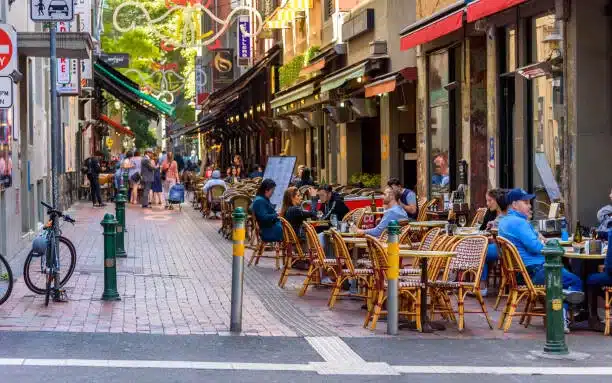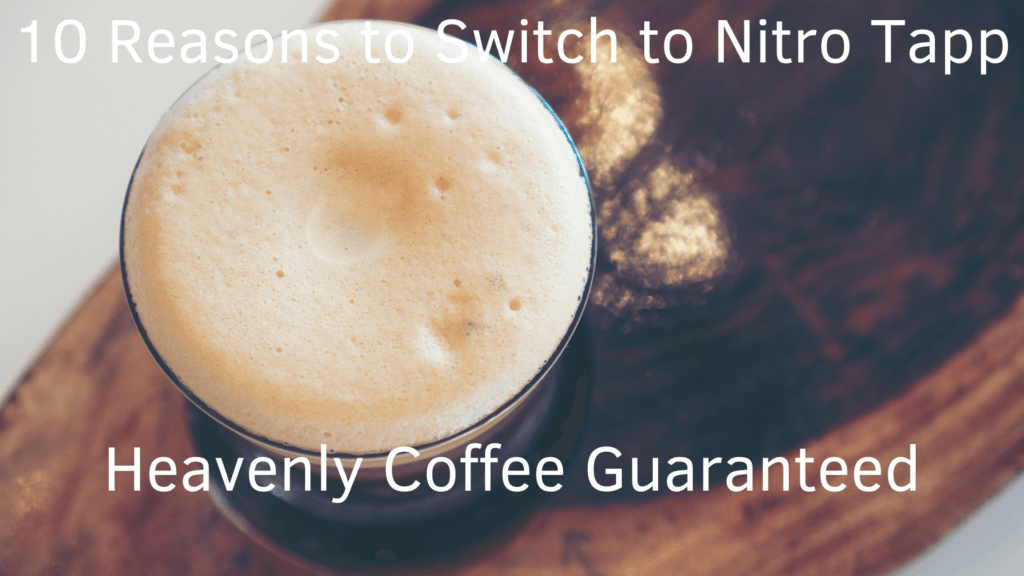Introduction To Coffee After Eating
Coffee – that delightful dark elixir that has single-handedly turned morning grumps into chirpy early birds since, well, forever. For many, it’s not just a drink; it’s an emotion, a ritual, and in some extreme cases, a life source. And let’s be real, given its bewitching aroma and the instant kick it provides, who can resist?
Now, here’s a brewing question that has probably popped up in many of our caffeine-loving minds: Just finished a lavish meal, and you’re eyeing that coffee machine like it owes you money. But pause for a dramatic gasp… is it okay to drink coffee right after eating? Or are we diving deep into the treacherous waters of digestive chaos?
Let’s grind down this bean of a question and brew up some answers! And, as always, let’s keep it steamy with a splash of humor because coffee topics should never be espresso-ly serious. 😉
The Digestive Dance: Food and Coffee

How Digestion Works
Digestion, much like your last attempt at assembling that complicated piece of furniture, is a process. And just as you wouldn’t dive straight into building without reading the manual, it’s essential to understand the basics of digestion before we jump into its intricate relationship with coffee. Let’s chew on this topic (pun intended)!
Basics of the Digestive Process
Digestion begins the moment you take that first dreamy bite of your food. Picture this: you’re gobbling down that delicious sandwich. Your saliva, which isn’t just a bystander at this delicious event, springs into action, breaking down the food with enzymes. This mush (called chyme for the fancy folks) then travels down the esophagus into the stomach.
Here, things get a bit more intense. The stomach is like the bouncer at an exclusive club, ensuring everything’s in check. It releases stomach acid and enzymes to further break down the food. This cocktail of chyme and stomach juices then moves to the small intestine, where nutrients are absorbed. What remains heads over to the large intestine, absorbing water and then… well, let’s just say, it exits the venue.
Varied Digestion Times for Different Foods
Digesting food isn’t a one-size-fits-all deal. Much like how some of us take longer than others to get ready in the morning (you know who you are), different foods have their own diva moments inside our system:
- Fruits and Raw Veggies: These lightweights take the express lane. Typically, they’re out in 30 minutes to an hour.
- Starchy Foods: Think pasta, rice, and bread. They’re like that friend who overstays their welcome – usually taking around 2 to 3 hours.
- Proteins: Foods like chicken, beef, or fish? They’re in for the long haul, taking anywhere between 4 to 6 hours.
- Fats: Ah, the luxurious fats. Like the VIPs of our digestive party, they take their time, soaking up the spotlight for 6 hours or more.
And where does coffee fit into all of this? Well, dear reader, patience! All will be revealed, but first, let’s savor the suspense like a fine latte. Cheers to our next chapter! 😉
Coffee’s Role in Digestion
If our digestive system is the orchestra playing a harmonious symphony, then coffee can be the surprise guest artist that makes the crowd go wild. But, is it always applause, or are there occasional boos? Let’s stir the pot—or should I say, the coffee mug—to find out.
Coffee’s Stimulatory Effect on Gastric Acid Production
Ever taken a sip of coffee and felt your stomach react almost instantly? No, it’s not just the warmth or that delightful taste – there’s science afoot! Coffee stimulates the stomach to produce more gastric acid. This acid, essential in the early stages of digestion, breaks down the proteins in the food.
Now, for our cheeky hint: Does coffee hit the fast-forward button or the pause button on our digestive symphony? Well, the caffeine in coffee can actually speed up the process, making your stomach empty faster than usual. So, if you’ve ever wondered why that espresso sends you running to the bathroom, now you have your answer. Coffee doesn’t dilly dally; it gets things moving! 😉
The Difference Between Regular and Decaf in Digestion
Now, onto the classic debate: regular vs. decaf. Is choosing decaf over regular akin to picking a tortoise over a hare in the digestive race? Not quite.
While it’s true that caffeine plays a role in this digestive speed-up, it’s not the only actor on the stage. Coffee also contains certain compounds that promote acid production, regardless of its caffeine content. So, even if you’re sipping on a decaf, your stomach’s acid production might still get a bit of a nudge.
That being said, the effects can be milder with decaf. If regular coffee sends you bolting like a sprinter, decaf might feel more like a brisk walk in the park.
our choice of regular and decaf here at just another cuppa
Conclusion
So, next time you’re sipping on your favorite brew, remember, you’re not just enjoying a beverage. You’re actively participating in a complex, waltzing dance of digestion. Whether you’re team regular or team decaf, just ensure you strike the right chord. After all, in the orchestra of life and digestion, harmony is key! ☕🎶
Benefits of Drinking Coffee After Eating

The Post-meal Slump Savior
Ah, the post-meal slump. That irresistible urge to curl up under your desk or snuggle with your couch after a hearty meal. You’re not alone in this; in fact, it’s a universal feeling that’s turned many of us into temporary narcoleptics. But what if there’s a knight in shining armor, a trusty steed that can jolt you back to life? Enter: Coffee.
How Coffee’s Caffeine Content Helps Tackle Post-meal Lethargy
Coffee doesn’t just warm our souls and tickle our taste buds; it’s also a potent pick-me-up, thanks to our good old friend, caffeine.
Caffeine is a stimulant that works its magic by blocking the effects of adenosine—a brain chemical involved in sleep. When adenosine is blocked, its relaxing and sedative effects are negated, which is why after gulping down that cup of joe, you suddenly feel like you could climb Mount Everest (or at least a small hill).
After meals, particularly carb-heavy ones, the body produces more adenosine. This, combined with the blood rushing to the digestive system (and away from the brain), can make you feel like you’re dragging your feet through mud. Coffee’s caffeine can counteract this, giving you a much-needed boost. So, the next time your eyelids get heavy post-lunch, you know which elixir to reach for.
The Scientific Connection Between Glucose Levels and Alertness
Let’s dive a little deeper, shall we? It’s not just the carbs and adenosine that can send you into the land of zzz’s. It’s also about how your body processes glucose—the primary energy source for our cells.
When you eat, especially foods rich in carbohydrates, your body breaks them down into glucose, leading to an increase in blood sugar levels. In response, the pancreas secretes insulin, which helps cells absorb this glucose. However, this rush of energy is often followed by a rapid drop, leading to that all-too-familiar energy crash.
But wait, there’s another twist to the tale! As glucose levels spike, there’s a temporary increase in the availability of tryptophan in the brain. This amino acid is a precursor to serotonin, a neurotransmitter that can make us feel relaxed and drowsy.
Now, coffee can’t really influence glucose levels directly. However, by blocking adenosine and stimulating the central nervous system, it can offset the sleepiness that follows a surge in serotonin. It’s like a counterbalance on the seesaw of alertness and drowsiness.
Conclusion
In the grand play of digestion and energy levels, coffee takes the stage as a much-loved protagonist, keeping the dreaded post-meal slump at bay. So the next time someone asks why you’re reaching for that espresso after a big meal, you can impress them with a bit of science—and perhaps share this article as a chaser! 😉☕
related Article – Shocking Health Benefits Of Cinnamon Coffee
Introduction To The Health Benefits Of Cinnamon Coffee Quick Overview of the Fusion of Coffee and Cinnamon Coffee and cinnamon, individually, have been enjoyed for millennia, each boasting a rich history and a plethora of uses. But, when combined, they create a harmonious blend that not only delights the palate but also offers a variety … Read More >>
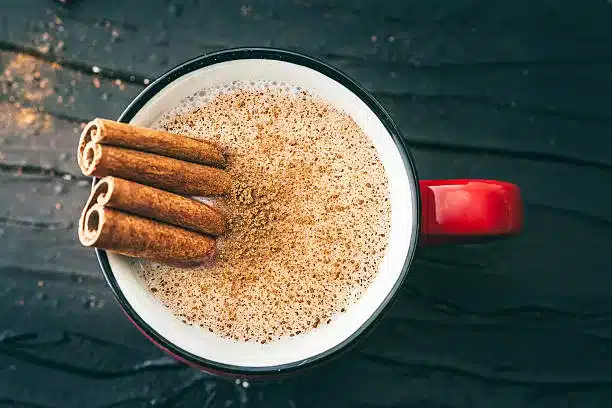
Boosting Metabolism
Metabolism! That enigmatic process that keeps the inner fires of our bodies burning. It’s often blamed for those pesky extra pounds (“It’s not the cake, it’s my slow metabolism!”) or credited for one’s ability to devour an entire pizza and still remain lean (“Bless my fast metabolism!”). But did you know that your daily brew might just be giving your metabolic rate a gentle nudge? Let’s dive into the steamy world of coffee and metabolism.
Coffee’s Influence on Metabolic Rate
Coffee isn’t just a mood-lifter or a wake-up call for the brain; it’s also a bit of a personal trainer for your metabolism. Here’s the lowdown:
- Caffeine Stimulus: The primary active ingredient in coffee, caffeine, can stimulate the nervous system, signaling fat cells to break down body fat. It’s like telling these cells, “Hey, it’s party time!”
- Increase in Adrenaline: With the above process in play, caffeine also leads to an increase in adrenaline levels in the blood. Adrenaline is our body’s “fight or flight” hormone, prepping us for physical exertion—like, say, running from a wild animal or, in a modern context, sprinting to catch a bus.
- Caloric Burn: As a result of these stimulated processes, the body’s basal metabolic rate increases. In simple terms, you burn more calories when at rest. Several studies have shown that caffeine can boost the metabolic rate by 3-11%. Not too shabby for just sipping on your favorite drink, right?
Can Coffee Aid in Faster Calorie Burning Post Meals?
Yes, that intriguing question: can your espresso shot help zap those dessert calories? Let’s filter this out:
- Thermogenesis Boost: Coffee can enhance thermogenesis, which is a fancy way of saying it helps produce heat. This process requires energy, meaning—you guessed it—burning more calories.
- Post-meal Metabolic Rise: A study has shown that after consuming a meal, the metabolic rate increases by about 3% more when coffee is consumed compared to water. It’s not a massive difference, but every little bit counts, especially if you’re eyeing that second slice of pie.
- Fat Oxidation: Caffeine intake has been associated with increased fat burning, especially in individuals with a higher body fat percentage. So, after a meal, having a cup of coffee might just assist in burning off those fats a tad faster.
Conclusion
While coffee isn’t a silver bullet (or should we say, a golden brew?) for weight loss or supercharged metabolism, it definitely offers a delightful perk—beyond its heavenly taste. So, next time you indulge in a meal and follow it up with a cuppa, remember: you’re not just satisfying your palate; you’re also giving your metabolism a gentle, caffeinated pat on the back. Cheers to that! ☕🔥
Antioxidant Boost
Alright, let’s paint a scene: Superheroes—flying around, fighting the villains, and saving the day. Got it? Now, in the realm of our bodies, these superheroes are none other than antioxidants, always on the lookout to combat the pesky free radicals wreaking havoc. But did you know our humble cup of coffee is teeming with these mighty defenders? Let’s unravel this.
Coffee’s Rich Antioxidant Profile
When we think of antioxidant-rich foods, blueberries, dark chocolate, or green tea might come to mind. But hold onto your mugs, because coffee is an under-the-radar superhero in this domain!
- Polyphenols Ahoy!: Coffee is packed with polyphenols—compounds that have been associated with various health benefits, including anti-inflammatory effects. These are the same compounds found in red wine (just in case you were looking for another reason to love coffee).
- Chlorogenic Acid: This is one of the main antioxidants found in coffee. Studies suggest it can improve glucose metabolism, reduce blood pressure, and even offer anti-aging benefits.
- Melanoidins: Produced during the roasting process, these compounds have been shown to have antioxidant properties as well. The darker the roast, the more melanoidins your coffee will have.
How These Antioxidants Synergize with Nutrients from Meals
Ever wondered if your cup of joe does more than just complement the taste of your meal? Well, the exciting news is, when combined with nutrients from foods, coffee’s antioxidants can form a dynamic duo:
- Enhanced Absorption: Some nutrients, like certain minerals and vitamins, become more bioavailable (i.e., our bodies can use them more effectively) when consumed alongside antioxidants. A coffee accompaniment might just boost the benefits of your meal.
- Counteracting Oxidative Stress from Foods: Let’s face it; not all meals are created equal. If you occasionally indulge in fried or processed foods, you’re consuming oxidized fats, which can increase free radicals in the body. Coffee’s antioxidants can swoop in, helping to neutralize some of this oxidative stress.
- Supporting Gut Health: The polyphenols in coffee can act as prebiotics, nourishing the beneficial bacteria in our gut. A balanced meal, combined with coffee, might offer synergistic effects for your digestive health.
Conclusion
It’s heartening to know that our daily brew isn’t just a mere indulgence; it’s a powerhouse of health benefits. From shielding our cells against damage to playing well with the nutrients in our meals, coffee’s antioxidants are the unsung heroes we should all raise our mugs to. So, the next time you’re sipping that aromatic blend, take a moment to appreciate the silent protectors within. To health, happiness, and the heroes in our coffee! ☕🌟
The Drawbacks – Timing is Key
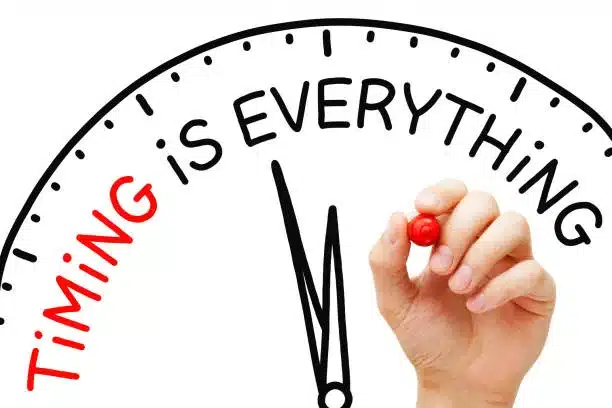
Too Soon Might Be Too Bad
The allure of a hot cup of coffee right after a delicious meal. It’s like a siren call for many of us. But, what if diving straight into that tempting pool of java post-feast might not be as benign as we think? Let’s perk up our ears (and mugs) and learn why timing, in the world of coffee and food, is everything.
How Immediate Coffee Intake Can Impact Iron Absorption
- Iron: that mighty mineral that’s key for transporting oxygen in our blood. If it were a character in a novel, it would be the protagonist, always at the heart of the action. But introduce coffee too soon after a meal, and there might be a plot twist.
- The Tannin Trap: Coffee contains compounds called tannins (also found in some teas and wines). Tannins can bind with iron, especially the non-heme iron found in plant-based foods, making it harder for our bodies to absorb.
- Who’s At Risk: For individuals with iron-deficiency anemia or those who rely on a vegetarian or vegan diet for their iron intake, this binding effect can be significant. Drinking coffee immediately after meals might mean they’re getting less iron than they think.
- The Waiting Game: To sidestep this potential pitfall, waiting at least an hour after eating before having coffee can help. This gives the body ample time to absorb the iron from the food.
Potential for Increased Acid Reflux If You’re Hasty

Many a coffee lover has felt that uncomfortable burn—a sign that their beloved brew is fighting back. Drinking coffee too soon after meals can turn that gentle burn into a roaring fire.
- Stomach Acidity Spike: As mentioned earlier, coffee stimulates the stomach to produce more acid. Combine this with the already present acids digesting your meal, and you’ve got yourself an overly acidic environment.
- The Weakened Gatekeeper: There’s a little muscular gate, called the lower esophageal sphincter, between our esophagus and stomach. It acts as a gatekeeper, keeping stomach acids where they belong. Coffee can relax this muscle, allowing acid to sneak back up—cue the heartburn.
- Sensitive Souls Beware: For individuals prone to acid reflux or with conditions like GERD (Gastroesophageal Reflux Disease), it’s especially crucial to be cautious about the timing of their coffee intake post-meal.
Conclusion
Like in any great story, timing is everything. While our beloved coffee has a plethora of benefits, understanding when to enjoy it in relation to our meals can make all the difference. Here’s to savoring our brews with wisdom and ensuring that our story with coffee always has a happy ending. Because, as we coffee aficionados know, every cup deserves to be a masterpiece. ☕🕰️📖
Disrupted Sleep Patterns
Ah, that beautiful slumber we call sleep. That sweet escape where we drift into dreamland, catching Z’s and rejuvenating our weary souls. But, throw caffeine into the mix, especially too close to bedtime, and those peaceful dreams might morph into a restless night of ceiling-staring. Let’s delve into the caffeinated realm of sleep disturbances.
The Half-Life of Caffeine and Its Potential Impact on Sleep
Just like that friend who overstays their welcome at a party, caffeine can linger in our system way longer than we might expect.
- Sticking Around: Caffeine’s half-life (the time it takes for half of it to be eliminated from our system) is about 3 to 5 hours. This means that if you have a cup of coffee at 4 PM, by 9 PM, half of that caffeine could still be partying in your bloodstream.
- Beyond Just Falling Asleep: While caffeine’s most notorious impact is making it hard to fall asleep, its effects are more insidious. It can also reduce the amount and quality of deep sleep, meaning even if you do drift off, you might not get the restorative rest you need.
- Varied Sensitivities: Some individuals metabolize caffeine faster than others, thanks to genetics. This means that while one person might be able to enjoy a late afternoon latte and sleep like a baby, another might find themselves wide-eyed and bushy-tailed all night.
Witty Remark: Love a Midnight Snack? Maybe Skip the Espresso!
If midnight is when you romance your fridge, reaching for that seductive slice of cheesecake, go ahead! But, coupling it with an espresso? Not unless you’re planning to binge-watch a series or count the stars. Remember: just as Cinderella had until midnight before her carriage turned into a pumpkin, your caffeine clock should have a cutoff too. After all, no one wants their sweet dreams replaced by a caffeine-fueled fairy tale nightmare.
Conclusion
In our coffee-loving hearts, there’s a time and place for everything. And while we might sing praises for our brew, knowing when to say “no more for today” is key. So, here’s to ensuring our love affair with coffee always respects our sacred bond with sleep. Because as every wise coffee connoisseur knows, balance is the essence of life—and that includes our beloved brews. Sweet dreams and even sweeter sips! ☕🌙💤
Overstimulation & Anxiety
Ever had that feeling after downing one too many espressos? Your heart’s playing a rapid drum solo, your hands are auditioning for a tambourine role, and your mind’s racing faster than a caffeine-fueled squirrel. That’s right; we’re diving into the edgy realm of coffee overstimulation and its unsettling partner-in-crime: anxiety.
How Excessive Caffeine Can Lead to Jitters
Ah, the jitters! It’s like your body’s quirky way of saying, “Maybe one less cup next time?”
- Caffeine’s Role as a Stimulant: Caffeine stimulates the central nervous system, perking us up. But, like any good thing, there can be too much of a perk. Overdo it, and you’ll find yourself in jitter city.
- Adrenaline Overdrive: As we’ve previously discussed, caffeine boosts adrenaline. It’s fantastic in moderation, prepping us for action. But, too much can make us feel like we’re perpetually bracing for a surprise exam.
- Magnesium Depletion: Coffee, especially in larger amounts, can lead to the depletion of magnesium—a mineral that plays a key role in muscle relaxation. Less magnesium can equal more muscle twitches and jitters.
Coffee’s Potential Impact on Post-meal Relaxation
Imagine: A hearty meal, that blissful full-belly feeling, and all you want to do is sink into a couch. But, introduce a strong coffee into the scene, and…
- Disrupted “Rest and Digest” Mode: After eating, our body naturally goes into the “rest and digest” phase. But caffeine can yank us out of this serene state, making us feel more alert and less relaxed.
- Anxiety Amplification: If you’re already prone to anxiety, caffeine can amplify those feelings, especially on a full stomach where digestion is already at work. It’s like adding fuel to an anxious fire.
- Heart Rate & Blood Pressure Hike: Coffee can temporarily raise heart rate and blood pressure, which might not be the ideal post-meal sensation for those seeking tranquility.
Conclusion
Coffee, in all its aromatic glory, is like that charismatic friend who always brings energy to the party. But, just as you wouldn’t want that friend blasting music during your meditation session, it’s essential to gauge when to invite coffee to your post-meal party. Let’s cherish our brew but also listen to our body’s cues, ensuring every coffee experience is just right: a symphony of flavor, energy, and peace. Here’s to the perfect balance! ☕🌀🛋️
The Perfect Timing – Revealed

Ideal Waiting Period
Timing—a crucial ingredient in many of life’s recipes. Whether it’s knowing when to pull a soufflé out of the oven or waiting for the perfect moment to savor a cup of coffee after a meal, it’s all about striking that harmonious balance. So, let’s set our timers and figure out the golden window for our post-meal caffeine indulgence.
Expert Consensus on How Long to Wait Post-meal
Given that we’ve explored the potential pitfalls of diving into a coffee too soon after eating, what’s the magic number we should aim for?
- General Recommendation: Most nutritionists and health experts agree that waiting at least 30 minutes to an hour post-meal before sipping on your coffee can help mitigate potential issues like iron absorption interference and acid reflux.
- Iron Consideration: If your meal is particularly rich in iron (think spinach or red meat), aiming for a 1-2 hour gap might be more beneficial to ensure optimal iron absorption.
- Listening to Your Body: While these recommendations offer a general guideline, always prioritize how your body feels. If you notice discomfort when drinking coffee too soon after eating, it might be worth extending that waiting period a bit more.
Factoring in Individual Differences: Everyone’s a Little Unique
We humans are a diverse bunch, and when it comes to how we metabolize and react to caffeine, the story’s no different.
- Metabolism Matters: Some folks have a faster caffeine metabolism thanks to their genetics. They might feel ready for a coffee sooner post-meal than others who metabolize caffeine at a slower pace.
- Age Influence: As we age, our stomach acid production can decrease. Older individuals might find that they need to wait a bit longer post-meal to comfortably enjoy a coffee without digestive discomfort.
- Health Conditions: For people with specific health conditions like GERD or anxiety disorders, the waiting period might need to be adjusted based on their comfort levels and doctor’s advice.
Conclusion
The dance between meals and coffee is like a well-choreographed ballet, where timing is everything. While expert advice offers a starting point, the key lies in understanding and listening to our unique rhythms. After all, in the grand coffee ballet of life, we’re all striving for that perfect pirouette—a seamless fusion of food, coffee, and well-being. So, here’s to finding your own ideal waiting period, one mindful sip at a time. ☕⏳🩰
Exceptions to the Rule
In the world of coffee etiquette, while there are guiding principles, sometimes rules are meant to be…well, bent a little. Think of them as guidelines, akin to a flexible yoga instructor who knows when it’s okay to deviate from the standard pose. Let’s delve into the situations where having that coffee soon after eating isn’t a complete no-no.
When It Might Be Okay to Bend the Timing Rules
Life is unpredictable, and sometimes, our coffee rituals need to adapt.
- Morning Hustle: We’ve all had those mornings. The alarm didn’t ring, you scarfed down a quick breakfast, and you desperately need that coffee to kickstart the day. In such cases, waiting might not be practical. Go ahead, grab that coffee, but perhaps opt for a smaller serving.
- Cultural Practices: In some cultures, it’s customary to serve coffee immediately after a meal, especially during gatherings or celebrations. When participating in such events, going with the flow is perfectly acceptable.
- Personal Tolerance: Over time, some coffee aficionados develop a tolerance to certain coffee-related side effects. If you’re one of the lucky ones who can sip an espresso post-dinner without batting an eyelid, more power to you!
Considering Meal Type: A Light Snack vs. a Hearty Dinner
The type of meal you consume can influence the coffee waiting game.
- Quick Bites: Had just a light salad or a small sandwich? The rules can be a tad more lenient here. Since there’s less food to digest, you might find that you can enjoy your coffee a bit sooner without any discomfort.
- The Feast Factor: On the flip side, if you’ve indulged in a hearty dinner or a three-course meal, giving your digestive system some extra time before introducing coffee is wise. Your belly will thank you!
- High Acid Foods: If your meal consisted of foods that are already high in acid (like tomatoes or citrus), you might want to give a longer gap before your coffee to avoid potential acid reflux.
Conclusion
Coffee rules, like many in life, come with their own set of asterisks. While guidelines help navigate our daily routines, it’s essential to remember that each person, situation, and meal is unique. Embrace flexibility, tune in to your body’s signals, and you’ll find your own sweet spot in the dance of dining and caffeinating. Because, as with any good dance, sometimes it’s okay to freestyle. ☕💃🍽️
Tips to Enjoy Your Coffee After Eating

Choosing the Right Brew
For many, selecting the perfect coffee is an art, akin to choosing the right paint for a masterpiece. But beyond flavor profiles and aroma, did you know that your choice can impact how your stomach feels post-consumption? So, let’s brush up on our coffee knowledge and craft that perfect cup, not just for our palate but for our digestive comfort too.
Light vs. Dark Roast: Which is Kinder on the Stomach?
The debate rages on in coffee circles: light or dark roast? But here, we’re not discussing flavor; we’re focusing on the tummy.
- Acidity Levels:
- Light Roast: Generally has a higher acidity, which can be harsher on sensitive stomachs. However, it’s worth noting that this “acidity” refers more to the bright, sparkly flavor notes rather than the actual pH.
- Dark Roast: Tends to be lower in acidity, making it a smoother choice for those prone to acid reflux or stomach discomfort.
- Compounds in Play:
- N-Methylpyridinium (NMP): Interestingly, dark roast beans have higher concentrations of this compound, which can reduce the stomach’s acid production. It’s a little twist in the tale that makes dark roasts potentially gentler on the stomach.
- Personal Preference and Tolerance: While the above offers a guideline, it’s crucial to listen to your body. Some might find a particular light roast that sits well with them, while others might still experience discomfort with a dark roast.
The Importance of Water Quality in Your Brew
Water isn’t just the universal solvent; it’s the unsung hero of your coffee brew.
- Mineral Content: Minerals in water can drastically affect the extraction of flavors from coffee grounds. While soft water might under-extract, leading to a flat taste, hard water with too many minerals might over-extract, creating a bitter brew.
- pH Level: Water’s pH can influence the acidity of your coffee. Neutral to slightly alkaline water is often preferred for a balanced cup.
- Impurities: Using filtered water free from impurities ensures that nothing interferes with the coffee’s flavor profile. Plus, it’s better for your health and your coffee machine’s longevity.
- Temperature: While not directly related to water quality, it’s worth noting that the ideal water temperature for brewing is between 195°F to 205°F (90°C to 96°C). Too hot or too cold, and you might not extract the flavors optimally.
Conclusion
Choosing the right brew isn’t just about tantalizing taste buds; it’s about ensuring harmony within. By understanding the nuances of roasts and the role of water, we can craft a coffee experience that’s delightful from the first sip to the last, without any unsettling notes. To the joys of a perfectly brewed cup and the contentment it brings! ☕🎨🖌️
Pairing with Desserts
Coffee and dessert—a match made in gastronomic heaven. The bittersweet notes of coffee, combined with the sweet allure of desserts, can create a symphony of flavors that resonate with our very souls. So, how do we navigate this flavorful realm and ensure that every pairing hits the right note? Let’s embark on a delectable journey, exploring the delightful duos that can elevate our dessert and coffee experience.
Ideal Coffee Types for Different Desserts

- Rich Chocolates and Truffles:
- Espresso: The intense, robust flavors of an espresso can beautifully complement the deep richness of dark chocolate. It’s a classic pairing where each bite and sip feels like a luxurious indulgence.
- Mocha: For an added layer of chocolatey goodness, a mocha can be a delightful companion to chocolate desserts. The cocoa in the coffee enhances the dessert’s flavors.
- Light Pastries and Croissants:
- Cappuccino: The frothy, creamy texture of a cappuccino can complement the flaky and buttery nature of pastries. It’s like a fluffy cloud meeting a golden sunrise.
- Latte: For those who prefer a milkier coffee, the smoothness of a latte can be a cozy pairing with your favorite pastry.
- Fruit Pies and Tarts:
- Light Roast Brew: A fruit-forward light roast can accentuate the fruity flavors of pies and tarts, creating a harmonious dance of sweet and tangy.
- Cold Brew: For a refreshing contrast, especially in warmer weather, a cold brew can be a crisp companion to fruity desserts.
- Creamy Desserts (like Tiramisu or Panna Cotta):
- Americano: The simplicity of an Americano, with its clean flavors, can cut through the creaminess of such desserts, providing a balanced experience.
- Ristretto: A concentrated, bolder version of espresso, Ristretto pairs excellently with creamy desserts by offering a robust contrast.
related article – awesome cold brew coffee for home
Ah, cold brew coffee for home. It’s the perfect solution for anyone who wants to enjoy a refreshing cup of joe without having to suffer through the sweltering heat of summer. But let’s be real here, making cold brew coffee at home can be a daunting task, especially if you’re used to popping a K-cup … Read More >>

A World of Flavor: Exploring the Delightful Duos
- Caramel Desserts with Salted Caramel Latte: Dive deep into the world of caramel by pairing a gooey caramel dessert with a salted caramel latte. It’s a match that’s equal parts sweet, salty, and utterly indulgent.
- Spiced Cakes with Chai Latte: For those who love a hint of spice, a spiced cake (like carrot or ginger) paired with a chai latte can be an aromatic and flavorful adventure.
- Berries and Cream with Berry-Infused Coffee: Some specialty coffees come with natural berry notes. Pair them with a berries and cream dessert for a berrylicious experience.
- Vanilla Pudding with Vanilla Latte: Double up on the comforting flavors of vanilla by pairing a creamy vanilla pudding with a soothing vanilla latte. It’s a duo that’s pure and heartwarming.
Conclusion
Pairing coffee with dessert isn’t just about satisfying our sweet tooth; it’s about creating memories, exploring flavors, and indulging in moments of pure joy. By understanding the essence of each dessert and coffee type, we can craft pairings that resonate, surprise, and delight. So, the next time you’re faced with a dessert menu and a coffee list, dive deep, mix and match, and let your taste buds embark on a flavorful journey. Cheers to the sweet symphonies of life! ☕🍰🎶
Adjusting Caffeine Intake
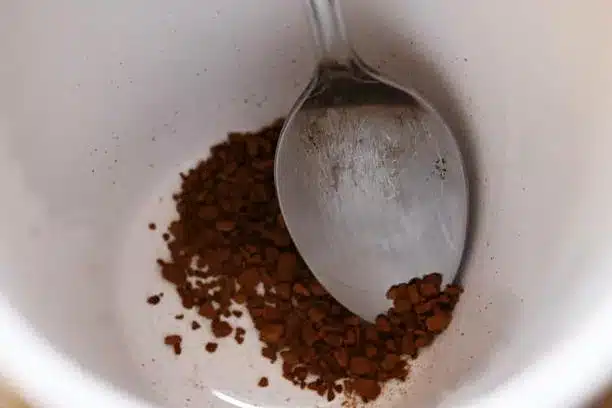
In the world of coffee, caffeine is like the lead guitarist in a band—front and center, driving the rhythm and making its presence felt. However, not everyone wants to be at the front row of a rock concert, especially if it’s post-dinner. For those seeking a mellower vibe, adjusting caffeine intake can be key. Let’s explore how we can fine-tune our coffee routine to ensure we’re in harmony with our body’s rhythm.
Opting for Decaf or Half-Caf Post Dinner
- The Lowdown on Decaf:
- Process: Decaffeinated coffee undergoes a process to remove most of its caffeine. It’s worth noting that decaf doesn’t mean zero caffeine, but it’s significantly reduced.
- Taste: Modern decaffeination processes ensure that while caffeine is reduced, flavor isn’t compromised. So, you can still enjoy the rich notes and aroma, sans the jitters.
- Ideal For: Those who love the ritual of a post-dinner coffee but want to ensure they’re not tossing and turning in bed later.
- Enter the Half-Caf:
- Best of Both Worlds: Half-caffeinated coffee, as the name suggests, blends regular and decaffeinated beans. It offers a moderate caffeine kick—perfect for those who want a bit of a buzz but not the full-blown caffeine concert.
- Taste Dynamics: Since half-caf uses a mix of regular and decaf beans, the flavor profile is rich and full-bodied. It’s a great middle-ground for those easing into reduced caffeine intake.
- When to Opt: If you’re looking to reduce caffeine gradually or if you find decaf too light for your taste but regular coffee too intense post dinner, half-caf is your go-to.
Personalizing Your Coffee Routine Based on Your Sensitivity
- Know Thyself:
- Genetics Play a Role: Some people are genetically predisposed to metabolize caffeine slower, making them more sensitive. It’s essential to understand how your body responds and adjust your intake accordingly.
- Listen to Your Body: If you find yourself feeling overly anxious, jittery, or having trouble sleeping after consuming coffee, it might be a sign to adjust your caffeine levels or the timing of your coffee.
- Adjusting Brew Strength:
- Water-to-Coffee Ratio: By using less coffee and more water, you can dilute the caffeine content of your brew. This approach allows you to enjoy a cup without the strong caffeine punch.
- Brewing Time: For methods like French press or cold brew, reducing the steeping time can result in a milder caffeine kick.
- Alternative Brews:
- Try Herbal Teas: If you’re looking to drastically reduce caffeine but still want a warm beverage post-dinner, herbal teas (like chamomile or peppermint) can be a soothing alternative.
Conclusion
In the grand symphony of life, caffeine plays a pivotal role for many. However, it’s essential to ensure that the notes strike a chord that’s in tune with our well-being. By understanding and adjusting our caffeine intake, we can ensure a harmonious relationship with our beloved brew. After all, coffee is all about comfort, warmth, and moments of reflection. Let’s make sure every sip feels just right. ☕🎸🎵
Coffee After Eating Conclusion

Ah, the journey we’ve taken—exploring the intricate dance between our beloved meals and the timeless allure of coffee. From the nuances of digestion to the rhapsodies of flavor pairing and the intricate art of caffeine adjustment, we’ve delved deep into understanding how to make the most of our post-meal coffee indulgence.
Recap on the Importance of Timing Your Post-Meal Coffee
- Digestive Dynamics: We’ve learned that the timing of our coffee can influence how our body digests food, and how the food we’ve consumed interacts with the coffee’s effects.
- Post-meal Slump Savior: Coffee, with its caffeine, can be the trusty steed that helps us combat the drowsiness that sometimes follows a meal. But wield this sword wisely!
- Metabolism and Antioxidant Boosts: Coffee isn’t just about staying awake. It’s about the myriad health benefits, from boosting metabolism to providing a dose of antioxidants, which can synergize wonderfully with our meals.
- Cautionary Tales: Yet, as with all good things, moderation and timing are key. Too soon, and you might be disrupting iron absorption. Too late, especially with a high caffeine content, and you might be singing lullabies to the stars rather than catching some zzz’s.
In essence, timing our post-meal coffee isn’t just about maximizing pleasure; it’s about optimizing our overall well-being. By understanding the nuances we’ve discussed, we ensure that every sip adds value, comfort, and joy to our lives.
Conclusion
Our journey through the world of post-meal coffee has been enlightening, to say the least. As we stand at the crossroads of meals and mochas, dinners and decafs, it’s clear that with a dash of knowledge and a sprinkle of timing, we can elevate our coffee experience.
So, the next time you’re faced with the alluring aroma of coffee post-dinner, remember: Your meal and coffee romance just got a little wiser! Cheers to many more cups, filled not just with coffee, but with wisdom and joy. ☕🍽️🎓
In a family of coffee addicts, Mark started to appreciate the drink fairly late – around 35 years old.
His love for java began when he wrote articles on it and bought his first machine after which everything else just fell into place; there are now five machines in our home!
We start every day with an early morning cuppa coffee because what could better help set your mind right than some freshly brewed hot Coffee?
When Marks not writing or thinking about coffee, he can be found sipping on a cup of black gold at one of his favorite local joints.


